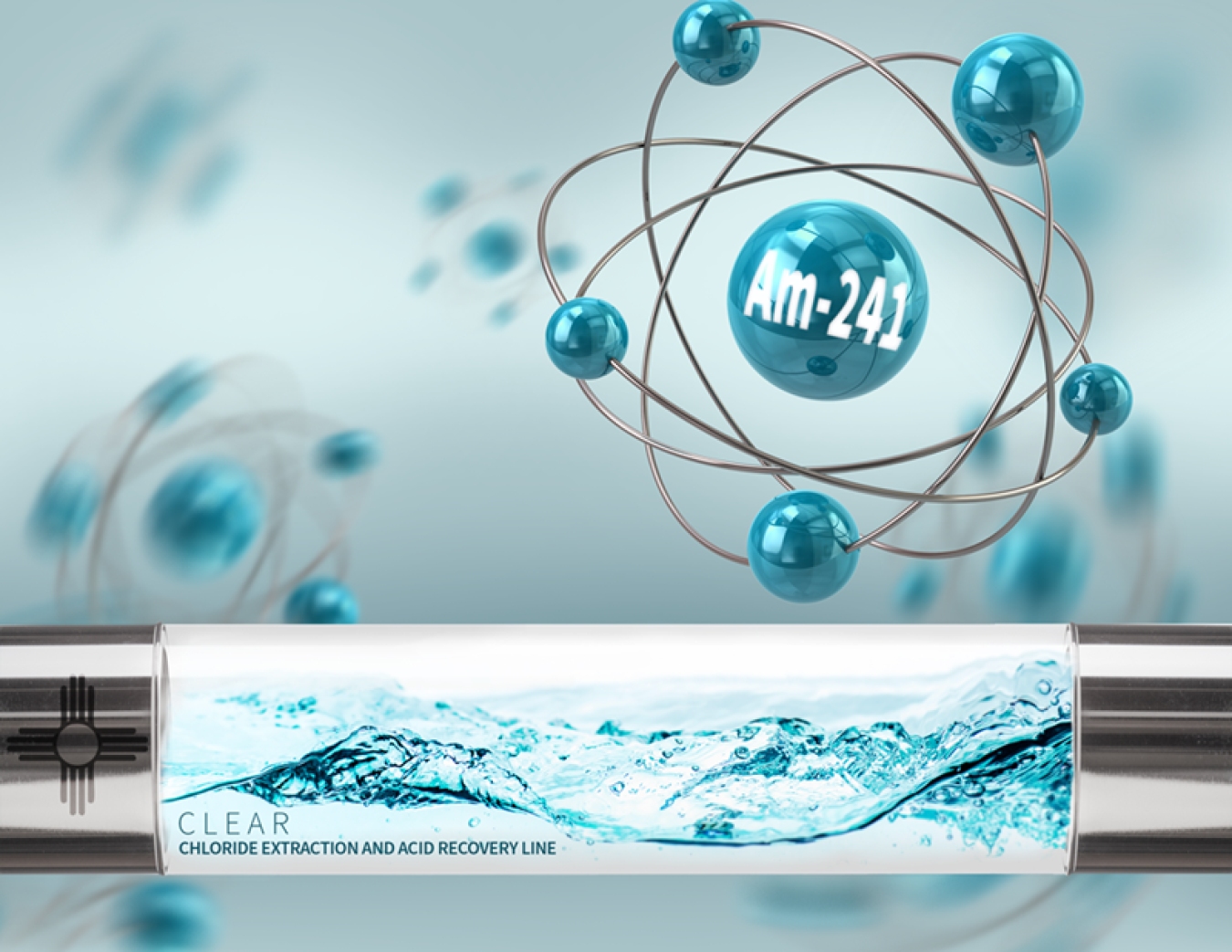Researchers explore the effects of radiation and harsh chemicals to optimize americium-241 production.
Isotope R&D and Production (DOE IP)
June 27, 2025The Science
Scientists use resin-filled columns to recover the isotope americium-241 (Am-241) from plutonium waste for commercial use. During this extraction process, the resin is exposed to harsh conditions including high radiation and strong acids. These conditions can damage the resin, decrease production efficiency, and reduce the amount of Am-241 recovered in the process. In this study, scientists tested different resins to assess the damage caused by these chemical and radiological conditions. They also identified new resins that increase Am-241 capture and better resist decomposition. Producers are now adopting these resins to make the extraction process safer and more efficient.
The Impact
Am-241, with a half-life of about 432 years, has a wide range of commercial, medical, and industrial applications. These applications include smoke detectors and nuclear batteries. Despite its broad use, only a few suppliers produce Am-241 worldwide. Scientists have now taken steps to bolster Am-241 production in the United States by improving the processing method. The improved process will increase production, improve worker safety, and diversify commercial access to Am-241. The production technology was demonstrated at Los Alamos National Laboratory. The benefits identified in small-scale studies were then confirmed in a production environment.
Summary
Researchers at Los Alamos National Laboratory (LANL) examined the effects of radiation and harsh chemical processing agents on Am-241 extraction chromatography. Extraction chromatography is a key step in the large-scale processing of Am-241 at the ChLoride Extraction and Actinide Recovery (CLEAR) processing line at LANL. The extraction of Am-241 from plutonium effluent relies on a resin used in extraction chromatography. A resin developed and produced by LANL has traditionally been used for the extraction process. However, batch variability led researchers to believe the resin was susceptible to the harsh extraction conditions.
Researchers tested a wide selection of resins to understand potential differences. They confirmed that radiation and strong acid conditions caused substantial degradation and poor performance in the resin that was used at the time. However, one group of the resins was robust. It showed enhanced resilience to the harsh conditions and outperformed the other two types in every metric examined. The improved-performance resins are also more tolerant of contaminants, can support larger process batch sizes with higher yields, and can accommodate a wide range of americium feedstocks. Industrial use of the improved-performance resins for Am-241 extraction chromatography will increase production efficiency and reduce the amount of harmful radiation workers are exposed to.
Contact
Stosh A. Kozimor
Los Alamos National Laboratory
stosh@lanl.gov
David Kimball
Los Alamos National Laboratory
dkimball@lanl.gov
Jenifer C. Shafer
Colorado School of Mines
jshafer@mines.edu
Funding
The research was supported by the Department of Energy (DOE) Isotope Program. It was managed for the Office of Science by Isotope R&D and Production and the Colorado School of Mines. Additional management came from the DOE Office of Science, Office of Basic Energy Sciences, Separation Science Program and the LANL LDRD-DR program. The research was carried out by Los Alamos National Laboratory. Dan McAlister of Eichrom Technologies Inc. supplied the DGA-based resin.
Publications
Arko, B.T., et al., Exploring how exposure to radiolysis and harsh chemical reagents impact americium-241 extraction chromatography. Materials Advances 4, 265-283 (2023). [DOI: 10.1039/D2MA00859A]


